Minimalist portrait photography is the key to this. Here’s how to shoot simple and powerful portraits.
What Is Minimalist Portrait Photography
Minimalist portrait photography is a sub-genre that’s often overlooked in portraiture. It aims to capture the beauty of simplicity. Without compromising the emotional quality of a portrait. Minimalist portraits often have simple backgrounds with few props. This might seem boring. It’s actually an effective way to focus on emotions and expressions. Without colorful distractions and a plethora of details, it’s easier to tell a touching story about your model (or even yourself).
Use a Large Aperture to Blur Out Details
Minimalist portraits are rarely detailed, so it’s important to use a large aperture. A large aperture (or a small f-number) will blur out all the details you’re not focusing on. This will make it easier to make your subject stand out. The smaller the f-number, the fewer details you’ll be able to capture. For example, a large aperture like f/1.2 can make it difficult to capture every detail on your subject’s face. Something a little larger, like f/2.8, will let you photograph more details. And it’ll create a soft background at the same time.
Shoot From Different Angles to Avoid Taking Boring Photos
There’s a fine line between simple and dull portraits. If you take photos from the same angle, your results will end up on the wrong side of the scale. Experiment with different angles to take unusual minimalist portraits. You can even try out unusual rotations to give your photographs a surreal or cinematic feel. Don’t be afraid of unconventional angles. Finding what works for you is the best way to discover your unique minimalist style. You can shoot from very low to very high angles and play around with everything in-between.
Don’t Focus on the Face Only
A common misconception in portrait photography is that a model’s face must be visible. Faces and expressions are an important part of the genre. But you don’t always have to include them in your images. You can focus on your model’s outfit, hand, shoulders, etc., in simple settings. This will further improve your knowledge of minimalism and make for unusual portraits. You can also use faceless photos can also in diptychs and other kinds of collages. These can tell intriguing stories.
Shoot Through Colorful Objects to Make Your Photos Look More Vibrant
An easy way to turn a dull portrait into an eye-catching one is to shoot through objects. Make sure you’re using a large aperture when you do this. The larger it is, the blurrier the object will look. Hold an object in front of your lens, making sure not to cover the entire thing. You can use flowers, leaves, hands, hair, or anything else that complement your model’s face. Don’t hold it too close to the lens or else it will darken your photo. If you want to be even more creative, use a reflective surface, such as a CD, a mirror, or a piece of glass.
Use Different Facial Expressions to Make Your Portraits Stand Out
Like similar angles, the same facial expressions will make your photos look boring. Let your model experiment with different expressions. They can be as silly or as somber as you like. This will give personality to a minimalist portrait. Your aim is to make your model feel comfortable enough to do this. To relate to them more, you can show them your favourite references or pull some faces yourself! Keep the atmosphere light to avoid awkwardness. The right expressions will take your minimalist portraits to the next level. A simple facial movement can be all you need. Knowing how to capture this, you can then take expressive photos of anyone and everyone.
Use Simple Props to Tell an Interesting Story
Minimalist photography isn’t about taking photos of one person in front of a white background all the time. If you find that your photos aren’t standing out enough, use props. Keep them simple so that they don’t take the attention away from your models. Examples of simple props are flowers, antique items, frames, and glasses. You can also photograph several people or include animals in your photos. All these things will give your portraits a fine art feel.
Use These Types of Lighting to Improve Your Minimalist Portrait Photography
Minimalist portraits are very simple. You don’t have to focus on as many elements as you would in other genres of portrait photography. One of the most important parts of minimalist photography is lighting. The right kind of lighting will enhance even the simplest of photos.
Backlight
Backlight is light that hits your subject from behind. Oftentimes, it’s covered by the subject itself. This creates a dramatic yet appealing contrast. You can ask your model to stand in front of the light source. Backlight is perfect for minimalist portraits. It creates an even amount of golden light around a subject. If captured from the right angle, it will create light flares. The best time to use it is during the golden hour.
Direct Light With Shadows
On its own, direct light can be quite harsh. Combine it with interesting shadows, and your minimalist portraits will stand out. The simplest way to do this is to use patterned fabric or accessories such as lace curtains and beach hats. Ask your model to hold the item in front of the light source. The brighter the light, the stronger the shadows will be and the more striking your photos will look.
Daylight on a Cloudy Day
Cloudy or gloomy days are perfect for minimalist portrait photoshoots. The softness of the clouds will cast an even amount of light on your model’s face. Make sure your subject raises their head a little so that enough light reaches their face. If it’s too gloomy, use a reflector to get rid of unwanted shadows.
Indoor Window Light
A large window is all you need to take amazing minimalist portraits indoors. Experiment with different angles and lighting techniques. You’ll then find one that flatters your model’s face the most. Generally, side light is one of the most flattering lights in portrait photography. It’s ideal for minimalist portraiture. It adds depth to an image and creates natural transitions. Both of these things can turn a simple photograph into an intriguing one.
Convert Your Photos to Black & White to Remove Distractions
Black & white photography can have great emotional depth. Without colorful distractions, your portraits will stand out in unique ways. Many people find it easy to notice textures and details in monochrome photography. In color photography, the same details might blend in with other parts of the image. You can shoot in b&w or convert your photos during the editing process. Both methods are acceptable. Conversion will give you more control over the tones in your final results.
Use Very Simple Backgrounds to Avoid Noisy Compositions
Your job is to make your compositions as simple as possible. You won’t be able to achieve this if you take photos in busy locations with lots of distracting elements. Keep details and colors to a minimum. The backgrounds you choose will affect the mood in your photos. Generally, white backgrounds will make your photos look lighter and more joyful. Darker backgrounds will make your images look moodier and more atmospheric. Fine art photographers often use black backgrounds. These give their photos a surreal look. No matter what kind of background you choose, always use a large aperture. This will separate your model from any distracting surroundings.
Conclusion
Minimalist portrait photography is an exciting genre to work with. If you use a large aperture, shoot in simple locations. And stay open to experimentation. You’ll be able to take stunning photos of simplicity no matter where you are.


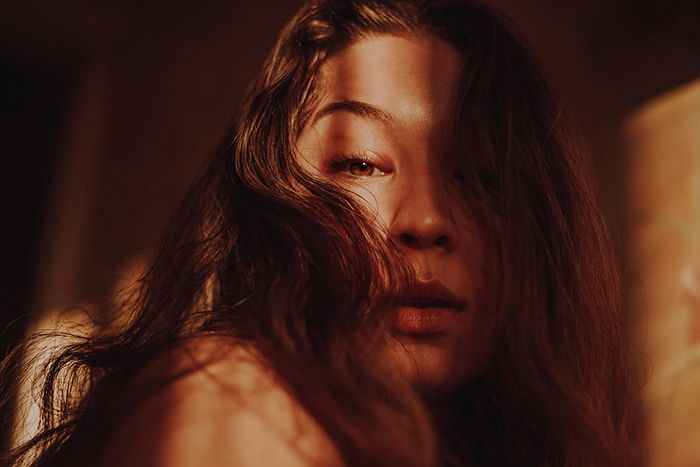
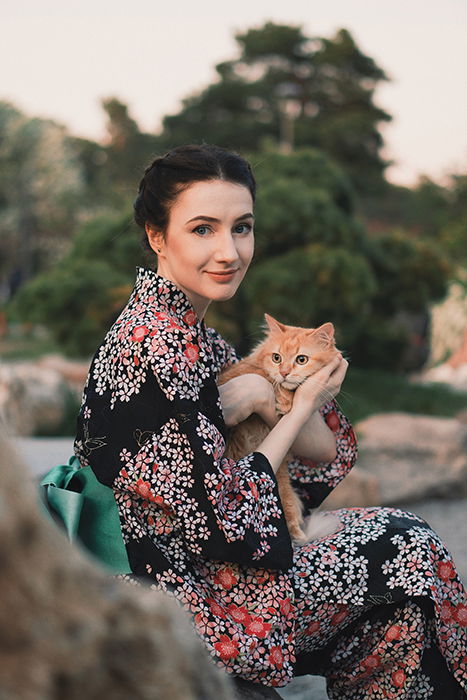
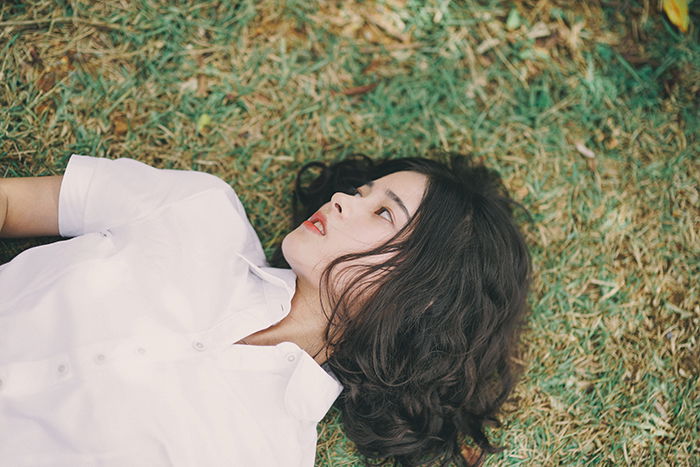
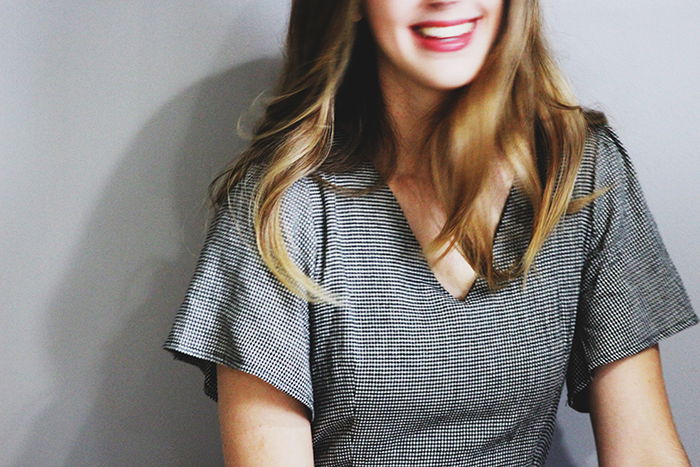
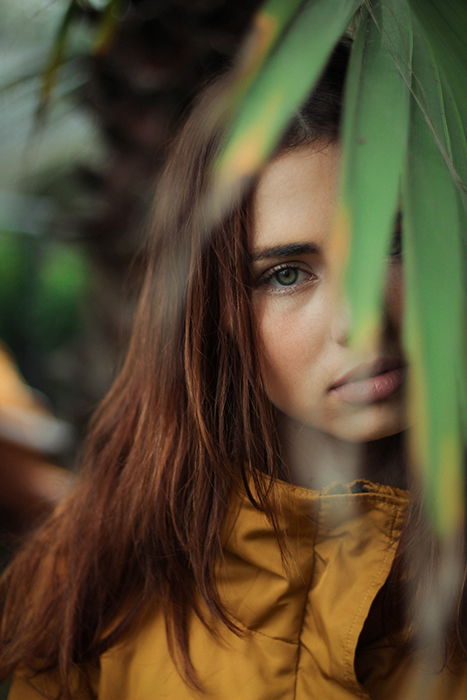
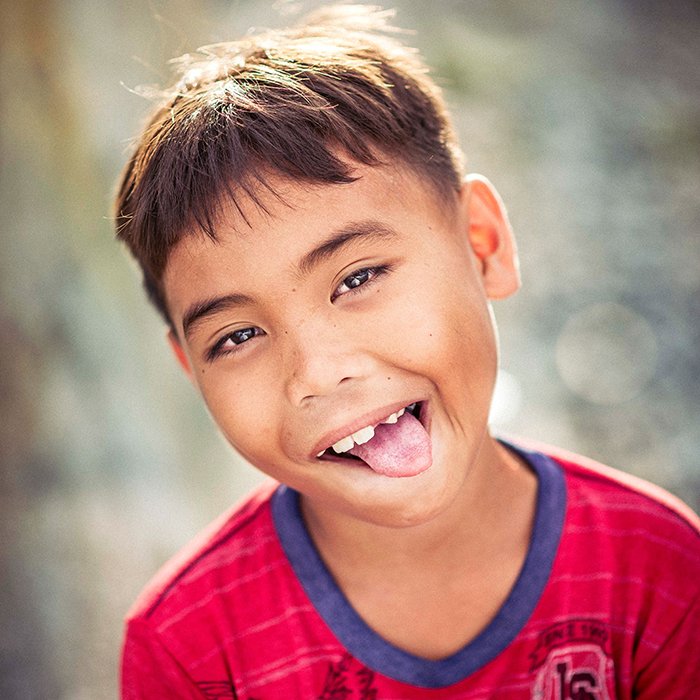

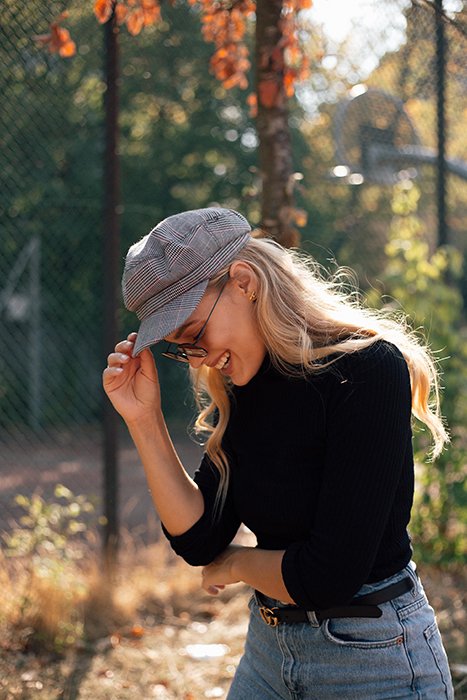
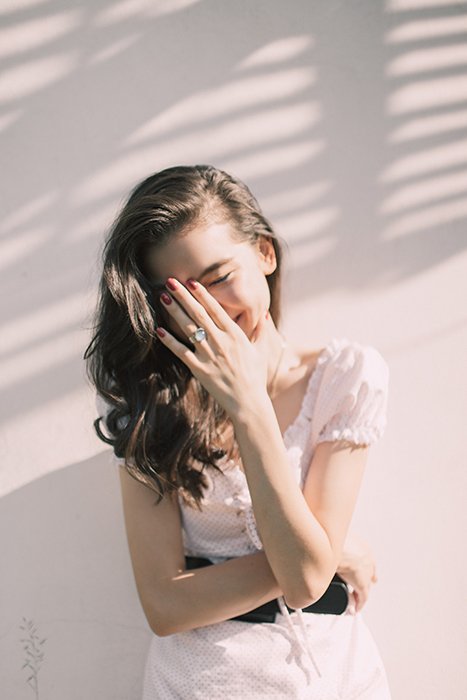
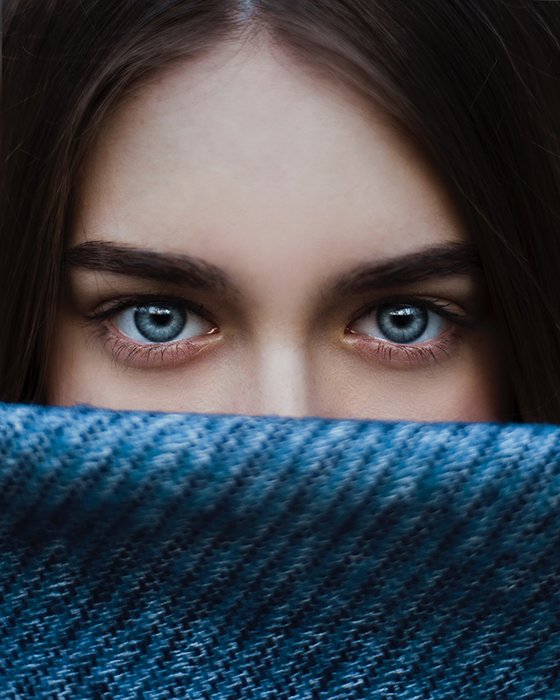
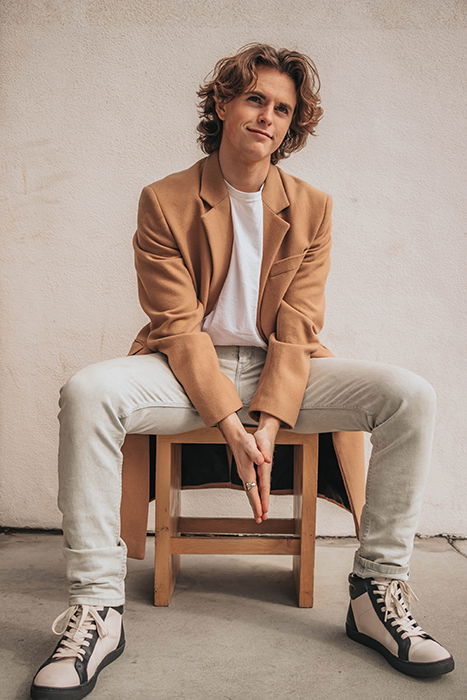
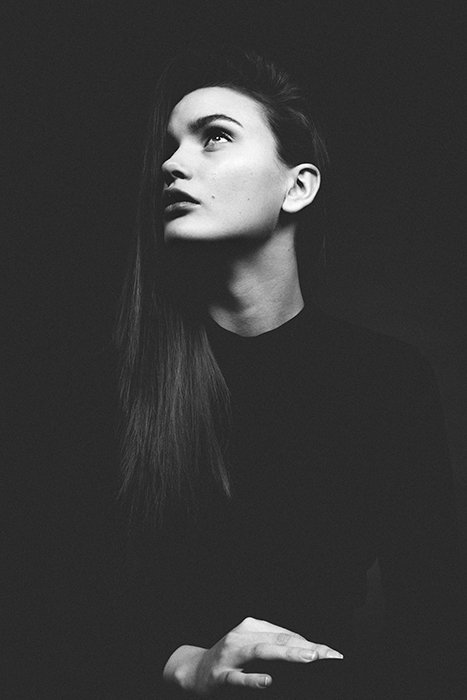
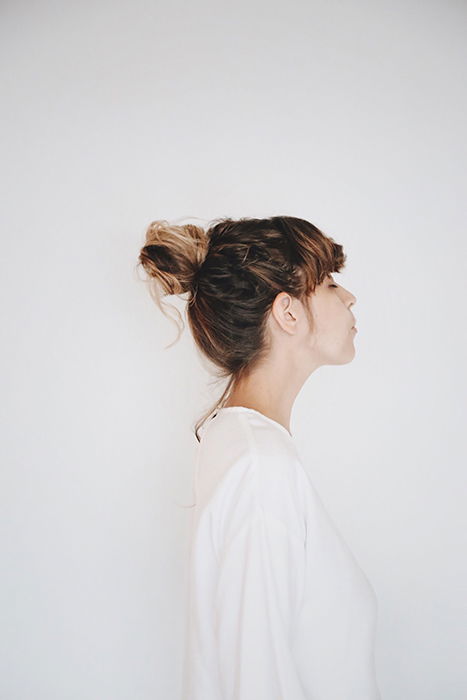
title: “How To Shoot Beautiful Minimalist Portrait Photography” ShowToc: true date: “2022-12-29” author: “Keith Daniels”
Minimalist portrait photography is the key to this. Here’s how to shoot simple and powerful portraits.
What Is Minimalist Portrait Photography
Minimalist portrait photography is a sub-genre that’s often overlooked in portraiture. It aims to capture the beauty of simplicity. Without compromising the emotional quality of a portrait. Minimalist portraits often have simple backgrounds with few props. This might seem boring. It’s actually an effective way to focus on emotions and expressions. Without colorful distractions and a plethora of details, it’s easier to tell a touching story about your model (or even yourself).
Use a Large Aperture to Blur Out Details
Minimalist portraits are rarely detailed, so it’s important to use a large aperture. A large aperture (or a small f-number) will blur out all the details you’re not focusing on. This will make it easier to make your subject stand out. The smaller the f-number, the fewer details you’ll be able to capture. For example, a large aperture like f/1.2 can make it difficult to capture every detail on your subject’s face. Something a little larger, like f/2.8, will let you photograph more details. And it’ll create a soft background at the same time.
Shoot From Different Angles to Avoid Taking Boring Photos
There’s a fine line between simple and dull portraits. If you take photos from the same angle, your results will end up on the wrong side of the scale. Experiment with different angles to take unusual minimalist portraits. You can even try out unusual rotations to give your photographs a surreal or cinematic feel. Don’t be afraid of unconventional angles. Finding what works for you is the best way to discover your unique minimalist style. You can shoot from very low to very high angles and play around with everything in-between.
Don’t Focus on the Face Only
A common misconception in portrait photography is that a model’s face must be visible. Faces and expressions are an important part of the genre. But you don’t always have to include them in your images. You can focus on your model’s outfit, hand, shoulders, etc., in simple settings. This will further improve your knowledge of minimalism and make for unusual portraits. You can also use faceless photos can also in diptychs and other kinds of collages. These can tell intriguing stories.
Shoot Through Colorful Objects to Make Your Photos Look More Vibrant
An easy way to turn a dull portrait into an eye-catching one is to shoot through objects. Make sure you’re using a large aperture when you do this. The larger it is, the blurrier the object will look. Hold an object in front of your lens, making sure not to cover the entire thing. You can use flowers, leaves, hands, hair, or anything else that complement your model’s face. Don’t hold it too close to the lens or else it will darken your photo. If you want to be even more creative, use a reflective surface, such as a CD, a mirror, or a piece of glass.
Use Different Facial Expressions to Make Your Portraits Stand Out
Like similar angles, the same facial expressions will make your photos look boring. Let your model experiment with different expressions. They can be as silly or as somber as you like. This will give personality to a minimalist portrait. Your aim is to make your model feel comfortable enough to do this. To relate to them more, you can show them your favourite references or pull some faces yourself! Keep the atmosphere light to avoid awkwardness. The right expressions will take your minimalist portraits to the next level. A simple facial movement can be all you need. Knowing how to capture this, you can then take expressive photos of anyone and everyone.
Use Simple Props to Tell an Interesting Story
Minimalist photography isn’t about taking photos of one person in front of a white background all the time. If you find that your photos aren’t standing out enough, use props. Keep them simple so that they don’t take the attention away from your models. Examples of simple props are flowers, antique items, frames, and glasses. You can also photograph several people or include animals in your photos. All these things will give your portraits a fine art feel.
Use These Types of Lighting to Improve Your Minimalist Portrait Photography
Minimalist portraits are very simple. You don’t have to focus on as many elements as you would in other genres of portrait photography. One of the most important parts of minimalist photography is lighting. The right kind of lighting will enhance even the simplest of photos.
Backlight
Backlight is light that hits your subject from behind. Oftentimes, it’s covered by the subject itself. This creates a dramatic yet appealing contrast. You can ask your model to stand in front of the light source. Backlight is perfect for minimalist portraits. It creates an even amount of golden light around a subject. If captured from the right angle, it will create light flares. The best time to use it is during the golden hour.
Direct Light With Shadows
On its own, direct light can be quite harsh. Combine it with interesting shadows, and your minimalist portraits will stand out. The simplest way to do this is to use patterned fabric or accessories such as lace curtains and beach hats. Ask your model to hold the item in front of the light source. The brighter the light, the stronger the shadows will be and the more striking your photos will look.
Daylight on a Cloudy Day
Cloudy or gloomy days are perfect for minimalist portrait photoshoots. The softness of the clouds will cast an even amount of light on your model’s face. Make sure your subject raises their head a little so that enough light reaches their face. If it’s too gloomy, use a reflector to get rid of unwanted shadows.
Indoor Window Light
A large window is all you need to take amazing minimalist portraits indoors. Experiment with different angles and lighting techniques. You’ll then find one that flatters your model’s face the most. Generally, side light is one of the most flattering lights in portrait photography. It’s ideal for minimalist portraiture. It adds depth to an image and creates natural transitions. Both of these things can turn a simple photograph into an intriguing one.
Convert Your Photos to Black & White to Remove Distractions
Black & white photography can have great emotional depth. Without colorful distractions, your portraits will stand out in unique ways. Many people find it easy to notice textures and details in monochrome photography. In color photography, the same details might blend in with other parts of the image. You can shoot in b&w or convert your photos during the editing process. Both methods are acceptable. Conversion will give you more control over the tones in your final results.
Use Very Simple Backgrounds to Avoid Noisy Compositions
Your job is to make your compositions as simple as possible. You won’t be able to achieve this if you take photos in busy locations with lots of distracting elements. Keep details and colors to a minimum. The backgrounds you choose will affect the mood in your photos. Generally, white backgrounds will make your photos look lighter and more joyful. Darker backgrounds will make your images look moodier and more atmospheric. Fine art photographers often use black backgrounds. These give their photos a surreal look. No matter what kind of background you choose, always use a large aperture. This will separate your model from any distracting surroundings.
Conclusion
Minimalist portrait photography is an exciting genre to work with. If you use a large aperture, shoot in simple locations. And stay open to experimentation. You’ll be able to take stunning photos of simplicity no matter where you are.














